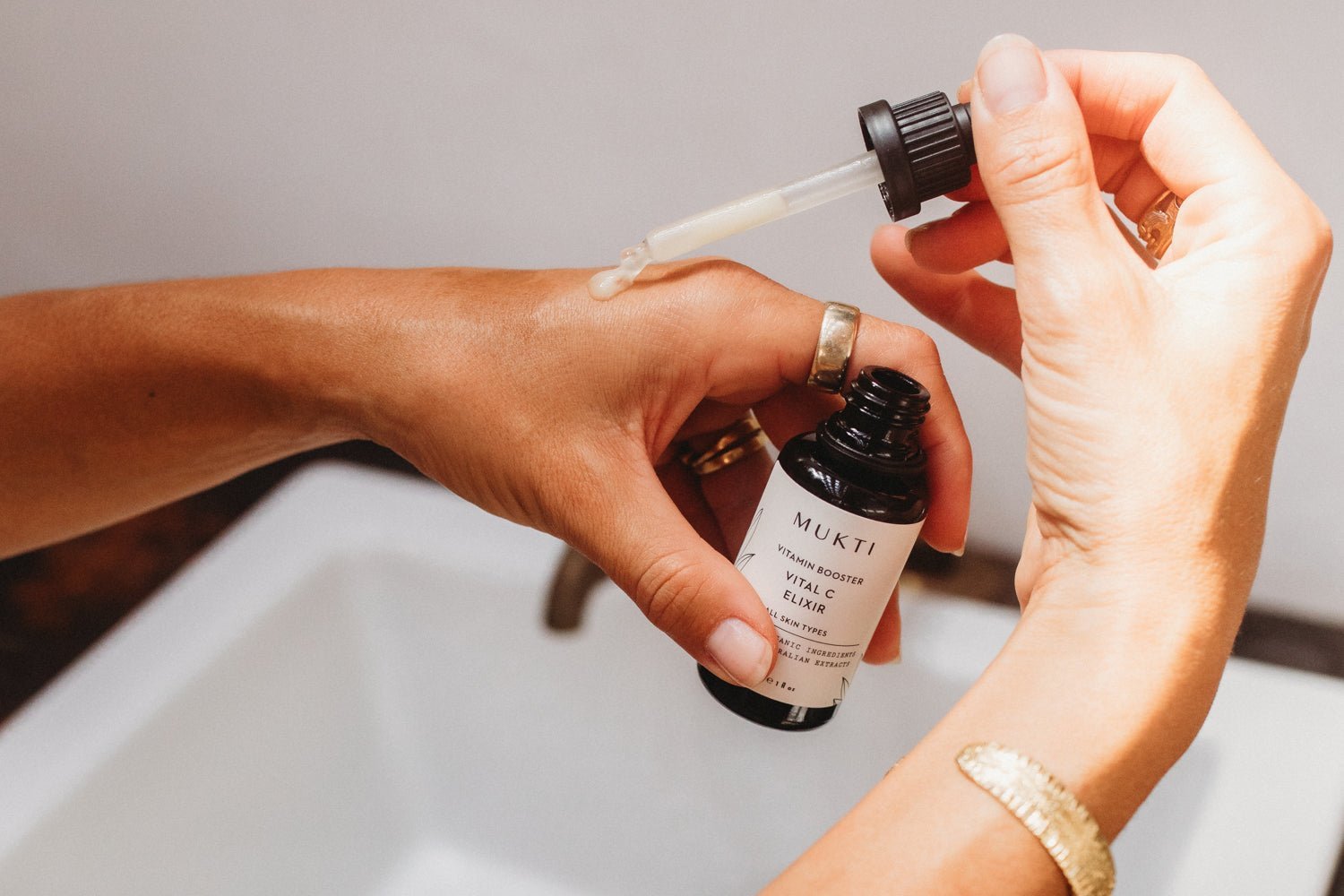
Why, When & How to Use Vitamin C Serums
Vitamin C may just be one of the most misunderstood ingredients of the skincare industry. However, it may also be one of the most wonderfully diverse, efficacious, and multi-beneficial actives of all. Here’s what you need to know to get it right.
What does a vitamin C serum do?
Vitamin C is loved for its many benefits. First and foremost, it’s a powerful antioxidant. This means it neutralises free radicals, which roam the body causing destruction to lipids, cells, and proteins like collagen. Neutralising free radicals is key to preventing this damage, which in turn delays signs of ageing caused by oxidative stress (an over-accumulation of free radicals). Vitamin C is also essential for the formation of collagen, so if you’re wanting your features to stay plump and voluminous for longer, Vitamin C can certainly assist. Another benefit is its strengthening effect on capillary walls, so if you have delicate skin that appears red because the vessels are visible through the surface, or you are prone to spider veins and burst capillaries, Vitamin C serums can assist with this. It has a lovely brightening effect on the skin, and helps to diminish pigmentation. And to cap it all off, it has even been shown to improve the effects of sunscreen agents.
Why does it have a reputation for causing sensitivity?
The misconception around Vitamin C serums is that they cannot be used on sensitive skins. This is where it gets a little tricky, and the misunderstandings around the ingredient come into play. Not all Vitamin C serums are equal; there are a lot of variations, or derivatives, of Vitamin C. L-Ascorbic Acid, for example, is one form of Vitamin C commonly used in skincare. However, there are countless others, such as Ascorbyl Tetraisopalmitate, and Tetrahexyldecyl Ascorbate. And then there are the pure botanical extract forms, such as Kakadu Plum. In addition to this, every serum uses a different amount, perhaps just 5%, or anywhere up to 25% Vitamin C. To further complicate matters, each product may utilise various encapsulation systems. In essence, this means the Vitamin C molecules have been coated in another ingredient that can help it to absorb deeper or even release into the skin slowly over time. If the ingredient is not encapsulated, and the dosage is high and the form is a more reactive type, it may be more prone to causing reactions in sensitive skins. All of these factors play a role in how well the product is tolerated, and how suitable it is for various skin types and concerns. Mukti’s Vitamin C of choice is 3-O-Ethyl Ascorbic Acid, a more stable derivative of ascorbic acid, as well as botanical extracts brimming with natural C.
When should I start using vitamin C serum?
Vitamin C can be used at any age. With its multitude of benefits, it can be used as an age-delaying potion, protecting from daily free radical damage, or to address inflammation or pigmentary concerns in younger skins. Vitamin C truly is one of our favourite active ingredients for lifelong skin health!
How often do I use my vitamin C serum?
Thanks to its antioxidant action, its ability to boost sunscreen agents, and its lovely brightening effect, most choose to use Vitamin C in the morning. We are more prone to excess free radicals during the day from sun exposure, exercise, pollutants and stress, so antioxidant protection is generally advised to be boosted in the morning. After cleansing, apply your Vitamin C serum first to allow it to penetrate deeply and begin work on your cells and pigment. If you use Hyaluronic Acid, additional antioxidants, calming or hydrating serums, or Vitamin B, use these next to help strengthen your barrier. Seal it all in with moisturisers or oils next, and finish with your sunscreen and makeup.
How do I apply my vitamin C serum?
We recommend always following the instructions as per your serum’s packaging, and paying attention to your skin’s response to the product. If you experience a negative response to your serum, including itching, swelling, and redness, you may want to consider discontinuing use. There is no evidence to suggest that we can build a tolerance to Vitamin C in our skin’s receptors in the same way we can with Vitamin A. Therefore, you may benefit from a different form and/or strength of Vitamin C in your products.
If you are looking into our Vitamin Booster Vital C Elixir, we recommend using each morning by pressing gently onto face, neck and décolletage and allowing to absorb.
How long after using vitamin C serum will I see results?
This can really vary according to the individual and the formulation of your chosen product. Many antioxidant ingredients are there to provide protection from damage and a boost to collagen production, meaning that no dramatic visible effect will take place. In saying this, Mukti’s Vitamin Booster Vital C Elixir is filled with an array of skin boosting vitamins and botanicals designed to make your complexion radiate youthful energy. Kakadu Plum, Finger Lime Caviar and Desert Lime provide the ultimate brightening trio, working to fade pigment, improve texture, and boost clarity. You may notice your skin starting to glow within 3-6 weeks of applying this energising powerhouse daily.
Remember, not all Vitamin C skincare products are made the same, and unfortunately, sentiments such as ‘I can’t use Vitamin C’ are all too common following adverse responses after using one type of product. If this applies to you, we understand this can be deterring and frustrating, but we would encourage you not to give up on Vitamin C just yet! There are endless benefits to be enjoyed, and once you find the right Vitamin C serum for you – you will never look back.




Leave a comment
This site is protected by hCaptcha and the hCaptcha Privacy Policy and Terms of Service apply.